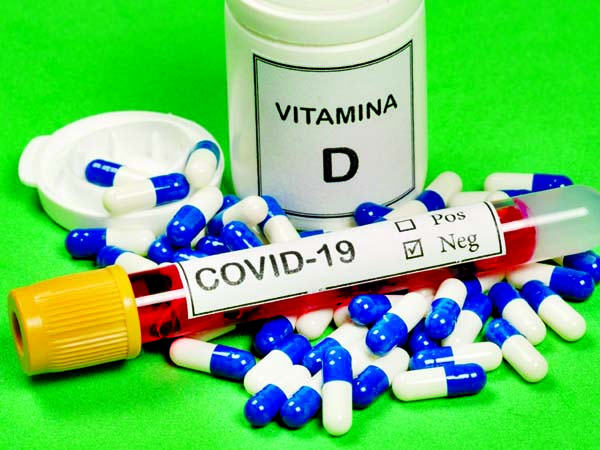
Chandan Sarkar :
Now the whole world is suffering for a single virus named Covid-19 or SARS-CoV-2. Covid-19 pandemic is an enormous health issue of worldwide scale and also signifies the greatest spotlight on education, travels, and economic conditions in the current world. According to the various studies, it is proven that the SARS-CoV-2 replication in the host cell led to serious acute respiratory distress syndrome (ARDS) and Covid-19-associated coagulopathy (CAC) by leading to a cytokine storm.
Treatment and/or prevention with a widely-available and already-licensed product such as vitamin D (cholecalciferol) could have a large impact on healthcare worldwide. Vitamin D is acquired both through nutritional means (10-20%) and by the cutaneous synthesis under the action of sunlight (80-90%). Vitamin D, after formation in the skin and obtained from dietary sources, undergoes hydroxylation in the liver, resulting in the formation of the chief circulating form 25-hydroxyvitamin D [25(OH)D].
Vitamin D is a hormone precursor produced by our own body with the help of sunlight which has an important role on adaptive immunity and cellular differentiation, maturation and proliferation of several immune cells. It provides the boosting and priming effects against the viral replication caused by several microbial peptides (i.e., cathelicidins and defensins), dysfunction of renin-angiotensin system (RAS), and cytokine storm in the host through modulating the innate and adaptive immune system.
Along with, reduced levels of vitamin D in calves were positioned as the main cause of bovine coronavirus infection in the past. Therefore, it seems plausible that the use of vitamin D as a nutritional ergogenic aid could be a potential intervention to fight against Covid-19 infected patients which remain asymptomatic or which have non-severe and severe symptoms.
High prevalence of vitamin D deficiency in elderly, smokers, patients with chronic diseases, and excess uptake by adipose tissue in obesity make investigations of its role as a secondary therapeutic agent in Covid-19 conceivable. The observational studies suggest that 25(OH)D induces protection against respiratory pathogens like SARS-CoV-2 while large-scale studies indicate that serum 25(OH)D-level is inversely correlated to hypertension prevalence. For this instance, it should be necessary to monitor serum 25(OH)D levels in all inpatient and outpatient populations with Covid-19 to identify the importance of maintaining or promptly increasing circulating levels of 25(OH)D into the optimal range of 100-150 nmol/L.
However, due to lack of effective therapy, symptomatic management is used for Covid-19 infection including oxygen therapy and mechanical ventilation for those with severe infection. Considering immunomodulatory, anti-inflammatory, anti-fibrotic and anti-oxidant actions of vitamin D, its safety and ease of administration, as well as direct effects of vitamin D on immune cell proliferation and activity, pulmonary angiotensin-converting enzyme 2 (ACE2) expression and reducing surface tension, evaluation of vitamin D supplementation as an adjuvant therapeutic intervention could be of substantial clinical and economic significance.
(Chandan Sarkar is a M. Pharm Student at Department of Pharmacy, Bangabandhu Sheikh Mujibur
Rahman Science and Technology
University. E-mail: [email protected])

